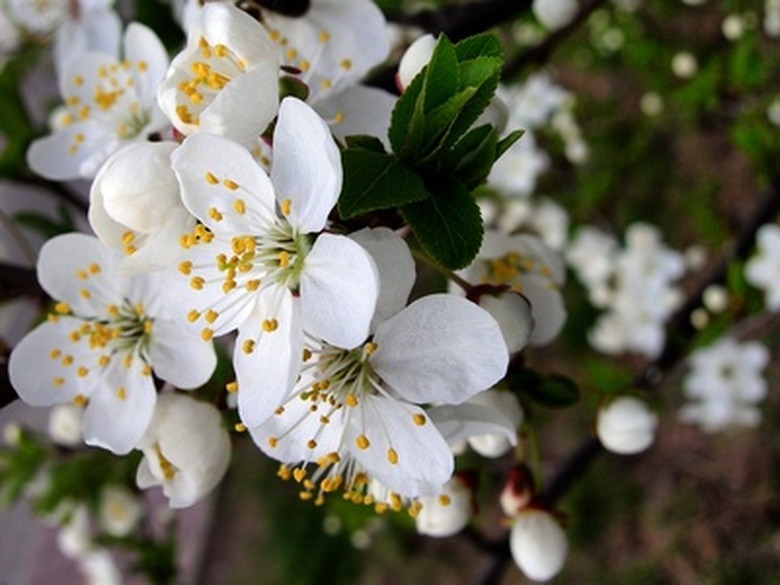Flowering Trees In Colorado
Falling within the United States Department of Agriculture (USDA) Hardiness Zones 2 to 7, Colorado experiences various climates and growing conditions. While the mountainous areas have a sub-arctic climate, most of the state experiences a highland continental climate. If you live in Colorado, choose flowering trees according to appropriate zone, mature tree size, flower color, bloom time and cultural requirements. Various flowering trees perform well in Colorado landscapes.
Western Catalpa
The western catalpa (Catalpa speciosa), also called the northern catalpa, reaches up to 50 feet in height and 35 feet in width. This tree features gray to red-brown bark and heart-shaped, deep green leaves that grow up to 12 inches long. Fragrant, white to pale purple flowers appear in June, giving way to narrow fruit pods that disperse seeds in the early spring. This trumpet-creeper family member (Bignoniaceae) prefers rich soils in partially shady locations. Colorado gardeners often use the western catalpa in moist woodland areas.
- Falling within the United States Department of Agriculture (USDA) Hardiness Zones 2 to 7, Colorado experiences various climates and growing conditions.
- This trumpet-creeper family member (Bignoniaceae) prefers rich soils in partially shady locations.
Honey Locust
The honey locust (Robinia pseudoacacia), sometimes called the black locust or the purple robe locust, features purple-tinted leaves and deep purple flowers. The fragrant, pea-like blossoms appear during the late spring and early summer in Colorado climates. This locust variety reaches up to 35 feet in height with spreads up to 25 feet. Honey locusts often suffer from locust borer infestations. This pea family member (Fabaceae) tolerates poor soil conditions, but prefers rich, moist soils in sunny locations. Colorado gardeners often plant the honey locust in woodland areas and shelterbelts. This thorny tree also works well to control erosion.
- The honey locust (Robinia pseudoacacia), sometimes called the black locust or the purple robe locust, features purple-tinted leaves and deep purple flowers.
- This pea family member (Fabaceae) tolerates poor soil conditions, but prefers rich, moist soils in sunny locations.
American Plum
The American plum tree (Prunus Americana ), also known as the wild plum, belongs to the rose family (Rosaceae) and thrives in moist, loamy soils in various lighting conditions. This small tree features a crooked trunk, wide crown and numerous branches. Fragrant, white flower clusters appear in April and May, followed by edible, red plums that work well in preserves and jams. The green leaves turn bright red to light yellow in the autumn. Mature American plum trees reach up to 35 feet in height. Colorado gardeners frequently plant American plum trees along stream banks and in woodland areas.
Chickasaw Plum
The Chickasaw plum (Prunus angustifolia), also called the sandhill plum, prefers loose, sandy soils in partially shady to fully sunny locations. This Rosaceae family member reaches between 15 and 30 feet in height and features a short trunk, flat crown, red branches and very dark bark. It also bears green leaves that turn light yellow in the autumn. This plum tree variety displays clusters of fragrant, white flowers from February through May. The blossoms give way to red fruit that matures in August or September. The edible plums can be eaten freshly picked or used in dessert recipes. Chickasaw plum trees work well in Colorado woodlands, landscape restorations and meadows.
- The American plum tree (Prunus Americana ), also known as the wild plum, belongs to the rose family (Rosaceae) and thrives in moist, loamy soils in various lighting conditions.
- The green leaves turn bright red to light yellow in the autumn.
